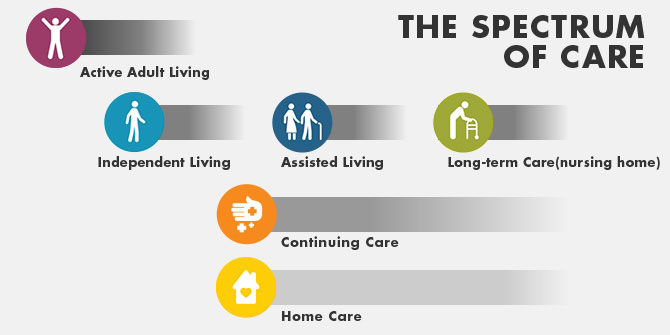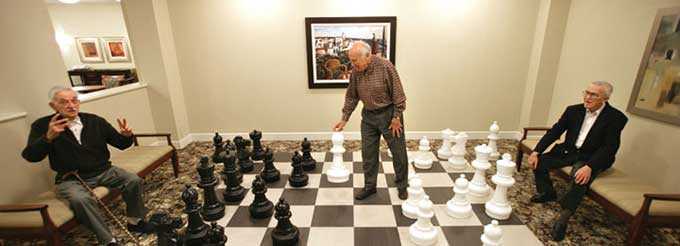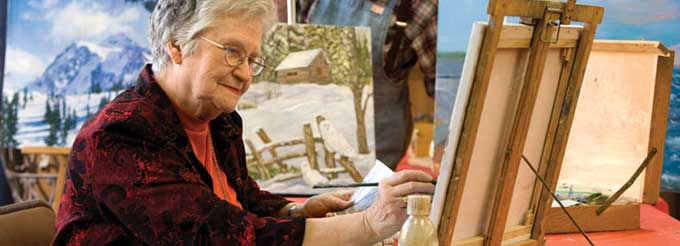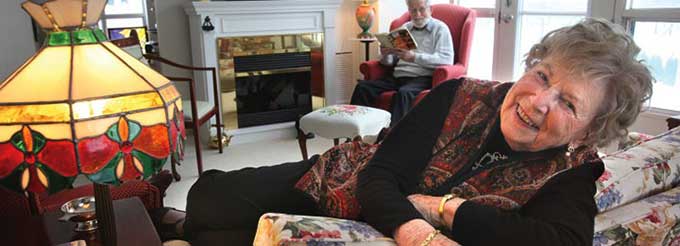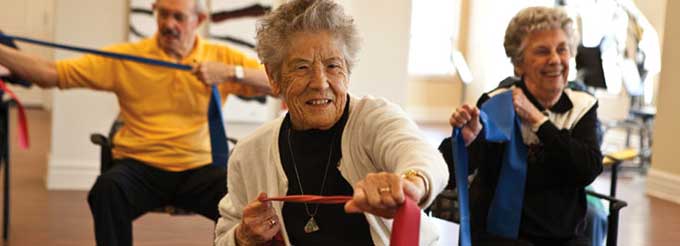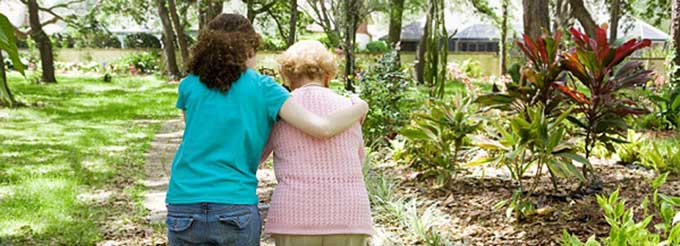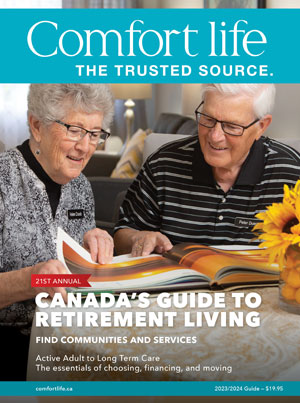720 Mt. Pleasant Road, Toronto,
Ontario, M4S 2N7
Family-owned and operated, the Briton House is dedicated to the highest standards of service. Offering a full continuum of care, a variety of amenities and suites, home-cooked meals, and a 15,000 sq. ft. indoor garden.
Lifestyle Options: Independent Living, Assisted Living, Memory Care
|
55 Belmont Street, Toronto,
Ontario, M5R 1R1
A superb retirement home nestled in Toronto proper, featuring a variety of apartments and suites, along with a fitness room for active seniors, an on-site convenience store and more.
Lifestyle Options: Independent Living
|
146 Sumach Street, Toronto,
Ontario, M5A 0P7
The Sumach by Chartwell is a beautiful 12-storey retirement residence featuring spacious seniors’ apartments with flexible, à la carte services and casual amenities in the heart of Downtown East.
Lifestyle Options: Independent Living
|
537 Finch Avenue West, North York,
Ontario, M2R 0A8
Forestview Retirement Residence is North York's newest seniors' residence. We offer Independent Lifestyle and Full Service Assisted Living Accommodations and Services, plus Short Term and Respite Stays.
Lifestyle Options: Independent Living, Assisted Living
|
866 Sheppard Avenue West, Toronto,
Ontario, M3H 2T5
A resort-like retirement residence in Toronto featuring a fitness centre, beauty salon and a variety of other luxuries, including a private dining room and more.
Lifestyle Options: Independent Living, Assisted Living, Memory Care
|
55 Ameer Avenue, Toronto,
Ontario, M6A 2Z1
We are Toronto's Finest Kosher Retirement Residence located on the Baycrest campus. We offer Independent & Assisted Living and Memory Care. Baycrest Terraces, "Where Life Thrives". Call us today for more information.
Lifestyle Options: Independent Living, Assisted Living, Memory Care
|
880 Lawrence Ave E, North York,
Ontario, M3C1P6
At Greenview Residence, we offer a complete range of care services in a welcoming environment. Whether it's our compassionate staff, fresh homemade meals, or exciting and engaging activities, you will truly feel at home.
Lifestyle Options: Assisted Living, Memory Care
|
77 Dunfield Avenue, Toronto,
Ontario, M4S 2H3
The Dunfield Retirement Residence has established a new standard in senior retirement living in the Greater Toronto Area (GTA) with 177 spacious apartments. Where people come to LIVE!
Lifestyle Options: Independent Living, Assisted Living, Memory Care
|
265 Queens Drive, Toronto,
Ontario, M6L 3C6
At Queens Estate, we offer a complete range of care services in a welcoming environment. Whether it's our compassionate staff, fresh homemade meals, or exciting and engaging activities, you will truly feel at home.
Lifestyle Options: Assisted Living, Memory Care
|
147 Elder Street, North York,
Ontario, M3H5G9
Enlightened dementia care touches more than memory. 147 Elder St. is a place that provides opportunities for the joy and meaning still ahead when wellbeing can no longer be realized at home.
Lifestyle Options: Memory Care
|
15 Summerland Terrace, Etobicoke,
Ontario, M9A 0B5
Delmanor West Village is an active aging community that offers residents unlimited opportunities to maintain an active and healthy lifestyle and improve their physical, mental and social well-being
Lifestyle Options: Independent Living, Assisted Living
|
2245 Lawrence Avenue West, Etobicoke,
Ontario, M9P 3W3
The Village of Humber Heights in Etobicoke offers different levels of service from independent apartments with meals to assisted living to long-term care.
Lifestyle Options: Independent Living, Assisted Living, Memory Care, Long-term care
|
187 Wynford Drive, North York,
Ontario, M3C 0C7
A full service 5-star retirement community centrally located in Toronto - features extensive common areas, a rooftop putting green and a variety of other amenities catering to today's active seniors.
Lifestyle Options: Independent Living
|
2 Green Belt Drive, North York,
Ontario, M3C 1L8
A luxury senior living community in the heart of North York. Be inspired by beautifully appointed amenities in our state-of-the-art building offering exceptional care, intelligent technology & exciting life enrichment.
Lifestyle Options: Independent Living, Assisted Living, Memory Care
|
1 Canterbury Place, North York,
Ontario, M2N 0G7
Canterbury Place offers a variety of suites styles in an elegant condo-like building for active adults & those needing assistance. We offer a unique healthcare program for our residents including palliative care.
Lifestyle Options: Independent Living, Assisted Living
|
111 Avenue Road, Toronto,
Ontario, M5R 3J8
Luxury and quality is in every corner of Hazelton from its lobby to its inviting Bistro & Bar. Offering amenities and services, Hazelton makes it easy for you to define and enjoy your lifestyle.
Lifestyle Options: Independent Living, Assisted Living
|
4650 Eglinton Ave. W., Etobicoke,
Ontario, M9A 0E3
Parkland on Eglinton West offers Lifestyle Apartments, All-Inclusive Lifestyle and Supportive Lifestyle options for seniors. Parkland makes it easy for you to do more of what you love!
Lifestyle Options: Apartments, Independent Living, Assisted Living, Memory Care
|
5351 Yonge Street, North York,
Ontario, M2N 7L5
Delmanor Northtown is a full-service boutique retirement residence located in the heart of North York, catering to active and independent seniors.
Lifestyle Options: Independent Living
|
1140 Bloor Street West, Toronto,
Ontario, M6H 4E6
A well-established not-for-profit, NHT is committed to enriching the lives of seniors. Gracious dining & café, a terrace garden, daily fitness, a vibrant Concert Series - there is plenty for residents to enjoy at NHT!
Lifestyle Options: Independent Living, Assisted Living, Memory Care
|
4180 Dundas Street West, Etobicoke,
Ontario, M8X 1X8
Situated in a treed ravine setting overlooking the Humber River, Delmanor Prince Edward provides vistas that vary from the serenity of the adjacent valley to the resplendence of the Toronto downtown skyline!
Lifestyle Options: Independent Living, Assisted Living
|
Retirement communities outside East York, Etobicoke, North York, Toronto |
2121 Kingston Road, Scarborough,
Ontario, M1N 1T5
Part of Scarborough history - located in the Bluffs/Beaches neighbourhood, where the White Castle Inn used to stand. Respite recovery, trial stays and winter retreats are available.
Lifestyle Options: Independent Living
|
2881 Eglinton Avenue East, Scarborough,
Ontario, M1J 0A2
McCowan Retirement Residence is a vibrant and family oriented retirement home located in Scarborough. With team members who have been here since we opened in 2004, you can expect a warm welcome and a feeling of home.
Lifestyle Options: Independent Living, Assisted Living, Memory Care
|
2930 Erin Centre Boulevard, Mississauga,
Ontario, L5M 7M4
Mississauga's unique continuum of care featuring a vibrant Main Street with Independent Living Suites, Retirement Apartments, Full Service Suites, Assisted Care, Memory Care and Long Term Care.
Lifestyle Options: Apartments, Independent Living, Assisted Living, Memory Care
|
180 Oak Park Boulevard, Oakville,
Ontario, L6H 0A6
Enjoy a social lifestyle and personalized support for your best retirement years yet.
Lifestyle Options: Independent Living
|
100 Morra Avenue, Bolton,
Ontario, L7E4K5
A short drive from the Nashville Conservation Reserve and surrounded by golf courses, Aspira Bolton Mills is perfect for anyone who loves the outdoors.
Lifestyle Options: Independent Living
|
3790 Brock Street North, Whitby,
Ontario, L1R 0H2
The Village of Taunton Mills in Whitby presents several levels of service from seniors' apartments with full kitchens, retirement apartments with meals and services to memory care, assisted living and long-term care.
Lifestyle Options: Apartments, Independent Living, Assisted Living, Memory Care
|
4100 Upper Middle Road, Burlington,
Ontario, L7W 4W8
At The Village of Tansley Woods, we offer the full continuum of care - Independent Living Suites, Retirement Apartments, Full Service Retirement Suites, Assisted Care, Memory Care and Long Term Care all in one village.
Lifestyle Options: Apartments, Independent Living, Assisted Living, Memory Care
|
148 Markham Road, Scarborough,
Ontario, M1M 2Z8
A family owned and managed residence that offers seniors the opportunity to maintain their independence. Enjoy healthy Chef-prepared meals, daily life enrichment programs. We also offer short-term trial or respite stays.
Lifestyle Options: Apartments, Independent Living, Assisted Living
|
3758 Sheppard Avenue East, Scarborough,
Ontario, M1T 3K9
Shepherd Terrace offers a variety of independent and assisted living suites within the renowned Shepherd Village. With its long history of providing caring service you’ll love the amenities and the excellent services.
Lifestyle Options: Independent Living, Assisted Living
|
1500 Steeles Avenue West, Thornhill,
Ontario, L4J 4H6
Four Elms is an elegant Retirement Residence offering the finest in Senior Living. Choose a suite style that is perfect for you and enjoy an active lifestyle, fine dining and the company of good friends.
Lifestyle Options: Independent Living, Assisted Living
|
33 Hurontario Street, Mississauga,
Ontario, L5G 3G8
Port Credit Residence situated in the Mississauga area offers seniors a luxurious resort-inspired lifestyle. Enjoy an oversized pool, wellness centre, onsite physiotherapy, a movie theatre, library, spa/salon and more!
Lifestyle Options: Independent Living, Assisted Living
|
9700 Bathurst Street, Vaughan,
Ontario, L6A 4V2
Vaughan's premier all-inclusive rental retirement community! Enjoy bright, spacious suites, modern amenities, delicious dining, and a Team devoted to Making Today Great! for you and your family! Book your tour today!
Lifestyle Options: Independent Living, Assisted Living
|
280 Lakeshore Rd. W., Mississauga,
Ontario, L5H 0A5
The Shores is designed for vibrant living with the highest quality of personal care. Amenities include pool, fitness & exercise club, restaurant, bistro & cafe, a golf simulator lounge & wine cellar.
Lifestyle Options: Apartments, Independent Living, Assisted Living, Memory Care
|
80 Elgin Mills Road East, Richmond Hill,
Ontario, L4C 0L3
Award Winning Delmanor Elgin Mills, has proudly served the Richmond Hill community since 2002, offering Independent, Assisted Living and Memory Care options, you can choose from a variety of well-appointed sized suites.
Lifestyle Options: Independent Living, Assisted Living, Memory Care
|
820 Scollard Court, Mississauga,
Ontario, L5V 0A1
Stylish Mississauga retirement home offering independent, full-service and assisted living lifestyles, featuring a hair salon, onsite bistro and much more.
Lifestyle Options: Independent Living, Assisted Living
|
70 Bernard Avenue, Richmond Hill,
Ontario, L4C 0W7
Richmond Hill Retirement Residence offers full service including meals, housekeeping, active adult, independent and assisted living. Our focus is on maintaining good health, great food, new friends & lots of laughter!
Lifestyle Options: Independent Living, Assisted Living
|
Home care companies in East York, Etobicoke, North York, Toronto |
2390 Eglinton Avene East, Suite #224, Toronto,
Ontario, M1K 2P5
Nurse for All offers medical and non-medical care support for people of all ages & needs in the GTA, Ontario, Alberta, BC, Nova Scotia at home, hospital, retirement home or long-term care facility.
Lifestyle Options: Respite care, Assisted Living, Memory Care, Long-term care, Home Care
|
2 St. Clair Avenue West, Toronto,
Ontario, M4V 3A1
In-Home Assisted Living offers caregivers and nurses to help seniors and people with medical challenges to remain living in their own home with safety and comfort. Also ask about our hospital bedside support.
Lifestyle Options: Respite care, Assisted Living, Memory Care, Long-term care, Home Care
|
10520 Yonge Street, Unit 4, Richmond Hill,
Ontario, L4C 3C7
Richmond Heights Health Clinic & Home Care, provides compassionate 24 hour personalized senior care services with bonded, registered & licensed Nurses / RPN's, in your home, hospital, rehab, LTC & retirement communities.
Lifestyle Options: Respite care, Assisted Living, Memory Care, Long-term care, Home Care
|

